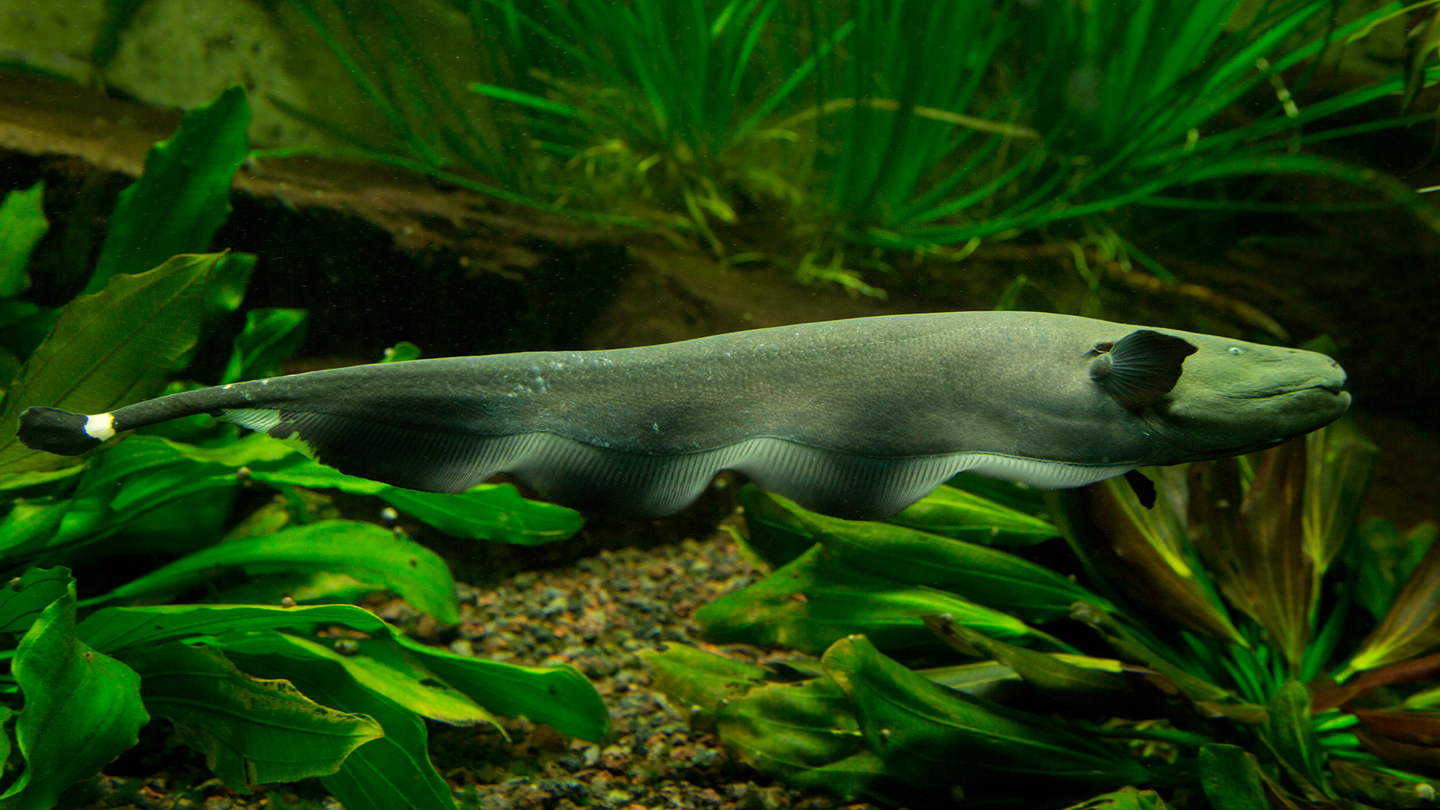Why electric knifefish ‘shimmy’
Quick movements heighten animal senses—even in humans.

Animals have a wide range of ways to make sense of the world around them. Dogs sniff the air around them. Dolphins use echolocation. Humans glance at each other. For the electric knifefish, “shimmying” around in the water like a tadpole helps it make sense of its watery world. But knifefish are not the only ones that wiggle with purpose. In a study published October 26 in the journal Nature Machine Intelligence, scientists describe a wide range of organisms that perform these same wavy patterns of movement to feel out the environment around them.
[Related: Five animals that can sense things you can’t.]
The team behind this study was interested in what the nervous system does when animals move to improve their perception of the world, and if that behavior could be translated to robotic control systems.
“Amoeba don’t even have a nervous system, and yet they adopt behavior that has a lot in common with a human’s postural balance or fish hiding in a tube,” study co-author and Johns Hopkins University mechanical engineer Noah Cowan said in a statement. “These organisms [knifefish and amoebas] are quite far apart from each other in the tree of life, suggesting that evolution converged on the same solution through very different underlying mechanisms.”
Shimmying in the dark
Knifefish are blade-shaped fish found in freshwater lakes and rivers in Central and South America. They can reach three feet long and eat insects, crustaceans, and other fish. In the wild, they are hardwired to hide to avoid predators. They send out weak electric discharges that sense the predators’ location and find shelter. Wiggling around rapidly helps them actively sense their surroundings to find a place to hide.
While watching electric knifefish in an observation tank, the team noticed that when it was dark, the fish shimmied back and forth significantly more frequently. The fish swayed more gently with occasional bursts of quick movements when the lights were on.
“We found that the best strategy is to briefly switch into explore mode when uncertainty is too high, and then switch back to exploit mode when uncertainty is back down,” co-author and Johns Hopkins computational cell biologist and neuroethologist Debojyoti Biswas said in a statement. When a predator could be nearby, the knifefish will quickly search for somewhere to hide. If they feel safe, they can return back to a more normal and less wiggly state to find food.
Exciting the senses
In the study, the team created a model that simulates the key sensing behaviors of the fish. They used work from other labs and spotted these same sensory-dependent movements in other organisms including amoeba, moths, cockroaches, moles, bats, mice, and even humans.
According to the authors, this is the first time scientists have deciphered this mode-switching strategy in fish and linked the behavior across species. They believe that all organisms have a brain computation that manages uncertainty in their environment.
[Related: How cats and dogs see the world.]
“If you go to a grocery store, you’ll notice people standing in line will change between being stationary and moving around while waiting,” Cowan said. “We think that’s the same thing going on, that to maintain a stable balance you actually have to occasionally move around and excite your sensors like the knifefish. We found the statistical characteristics of those movements are ubiquitous across a wide range of animals, including humans.”
Understanding these sensory mechanisms and their nuances could be used to improve search and rescue drones, space rovers, and other autonomous robots. These same characteristics for looking around could be built into future robots to help them perceive the space around them. The team also plans to explore how these mechanisms work in living things—even in plants.
